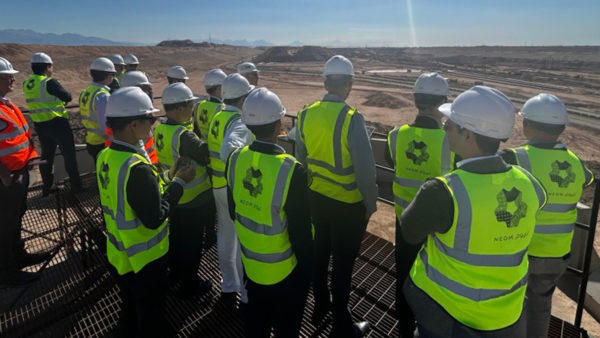
The shift away from hydrocarbons could spark an industrial revolution in the 2020s in the same way the shift from steam to electricity did in the 1920s.
They say you can tell which way the economy is heading by how well men’s underpants are selling. If people are availing themselves of the comfort of a brand new pair – a relatively low-cost treat – sentiment is deteriorating, the thinking goes. With women’s consumer goods it was known as the ‘lipstick index’.
By that logic, the latest set of numbers for British construction from the Office for National Statistics should mean that make-up and underwear counters are run off their feet. Output slipped by 0.4% in April, marking the first decline since October. Inflation is heading towards 10%. Sterling is tanking against other currencies, and it’s hard to find an industry leader who doesn’t think a recession is coming.
We see the pipeline of new work starting to slow, with new orders across our sector falling by 2.6% in the first three months of the year compared with the final quarter of 2021. It’s not all doom and gloom. In the three months to the end of April, output did grow by a respectable 2.9%, if down from the 3.8% posted in the first quarter of the year.
But confidence is being tested by soaring construction costs and weak demand for office space, making a number of developers pause for thought before committing.
In the short-term things are busy, but it’s the pipeline that is a worry, especially for those operating in commercial property.
1920s tech revolution
I tend to take a long-term view, however, and feel that we could be on the verge of a period of rapid, technology-driven growth, as happened in the 1920s, when mass electrification, the exploitation of oil, and a blizzard of advances in manufacturing saw economies roar for a decade.
Deep shifts of a similar kind may be apparent today. Consider how the pandemic changed work. Overnight, the proportion of people working from home in the UK leapt from around 5% to 50%, compressing years’ worth of digital and cultural evolution into months.
“The scale of the mindset shift is evident from other audacious schemes, such as the plan to supply Singapore with 15% of its electricity with Australian sunshine via a 4,200km-long high voltage undersea cable network.”
An even bigger change is the energy transition, where climate concerns have been given extra, urgent impetus by Putin’s invasion of Ukraine.
The scale of it may escape our attention because it’s happening everywhere at a time when so much else is going on, but what started as a shift away from hydrocarbons seems likely to broaden into a societal and industrial revolution in much the same way that the move from water to steam did in the 19th century, and the shift from steam to electricity and hydrocarbons did in the 20th.
Growth of renewable capacity
Technological improvements have helped collapse the cost of wind and solar, rendering renewables cheaper than gas or coal. Last December the International Energy Agency estimated that global renewable capacity will rise by 60% by 2026, with total capacity forecast to exceed that of hydrocarbons and nuclear combined.
Mega-wind farms are proceeding off the north-east coast of the US, while similarly large offshore developments seem to crop up in other locales every month. Recently, cities in the US, Ireland, Estonia and elsewhere unveiled plans to turn ports into construction-logistics hubs for wind farms.
Hydrogen has entered the mix, with a number of mind-boggling, multi-gigawatt schemes in train to produce the element cleanly with vast offshore wind farms in Europe and South America. As a knock on effect, Germany plans to spend $8bn on hydrogen development, including establishing 1,700km of pipelines by 2030.
The scale of the mindset shift is evident from other audacious schemes, such as the plan to supply Singapore with 15% of its electricity with Australian sunshine via a 4,200km-long high voltage undersea cable network. (See further reading.)
These instances are just individual pixels in a big and fast-developing picture. The massive expansion in renewables, plus numerous governments’ renewed interest in nuclear and “mini-nuclear” power, looks set to offer our sector a long and much needed pipeline of work.
The immediate outlook may be darkening, but big changes in the structure of the world’s economy are coming, driven by technology, climate transition and the changing nature of work. While the roaring twenties may seem a distant pipe dream now, that vision could materialise later this decade.
When that happens, it will not just be underpants or lipstick that will be flying off the shelves.
Richard Steer is chairman of Gleeds Worldwide and Special Honorary Fellow of the CIOB
Further reading
- Australian company plans $22bn scheme to bring solar power to Southeast Asia
- Swedish firm plans $18bn Baltic wind farm
- European companies unveil plan for massive solar-to-hydrogen network
- Ørsted picks ‘strongest possible team’ in bid for €28bn energy island
- UK chemical company places €2bn bet on growth of euro-hydrogen market
- $22bn plan announced to plug UK into the Sahara Desert
- Germany, Norway mull hydrogen pipeline as alternative to Russian gas










